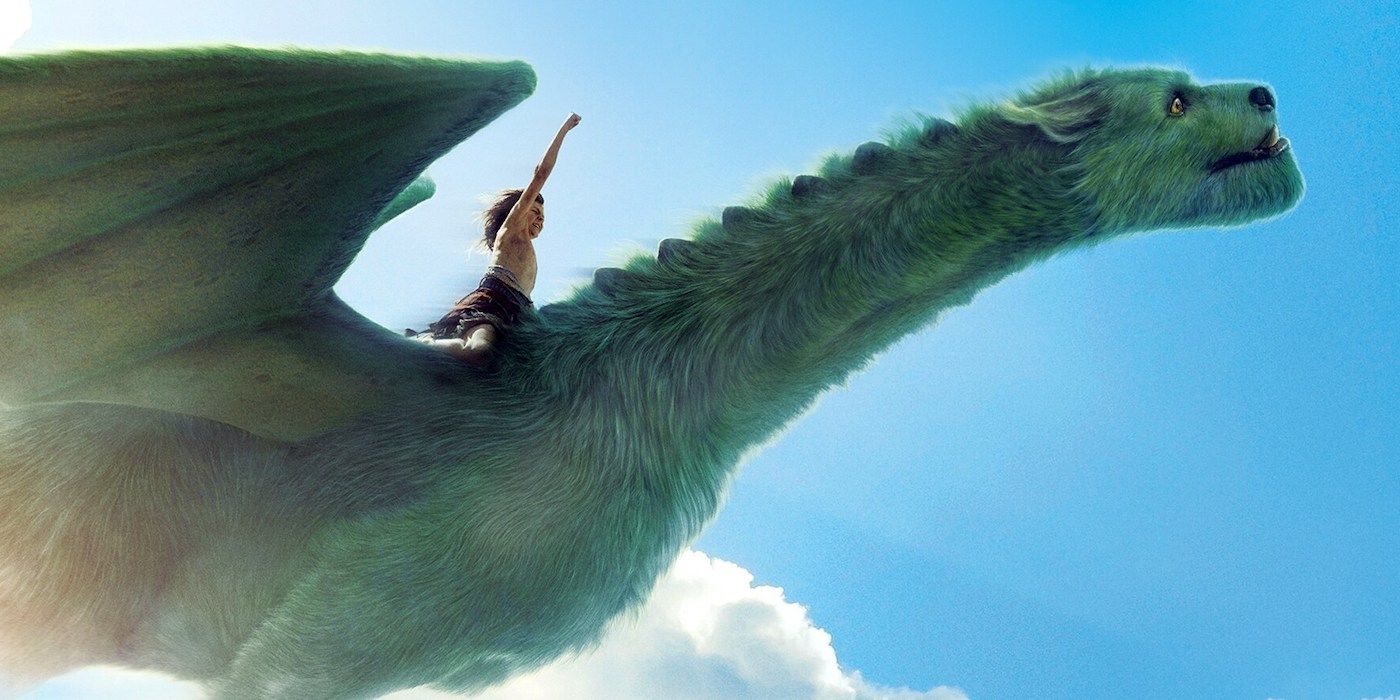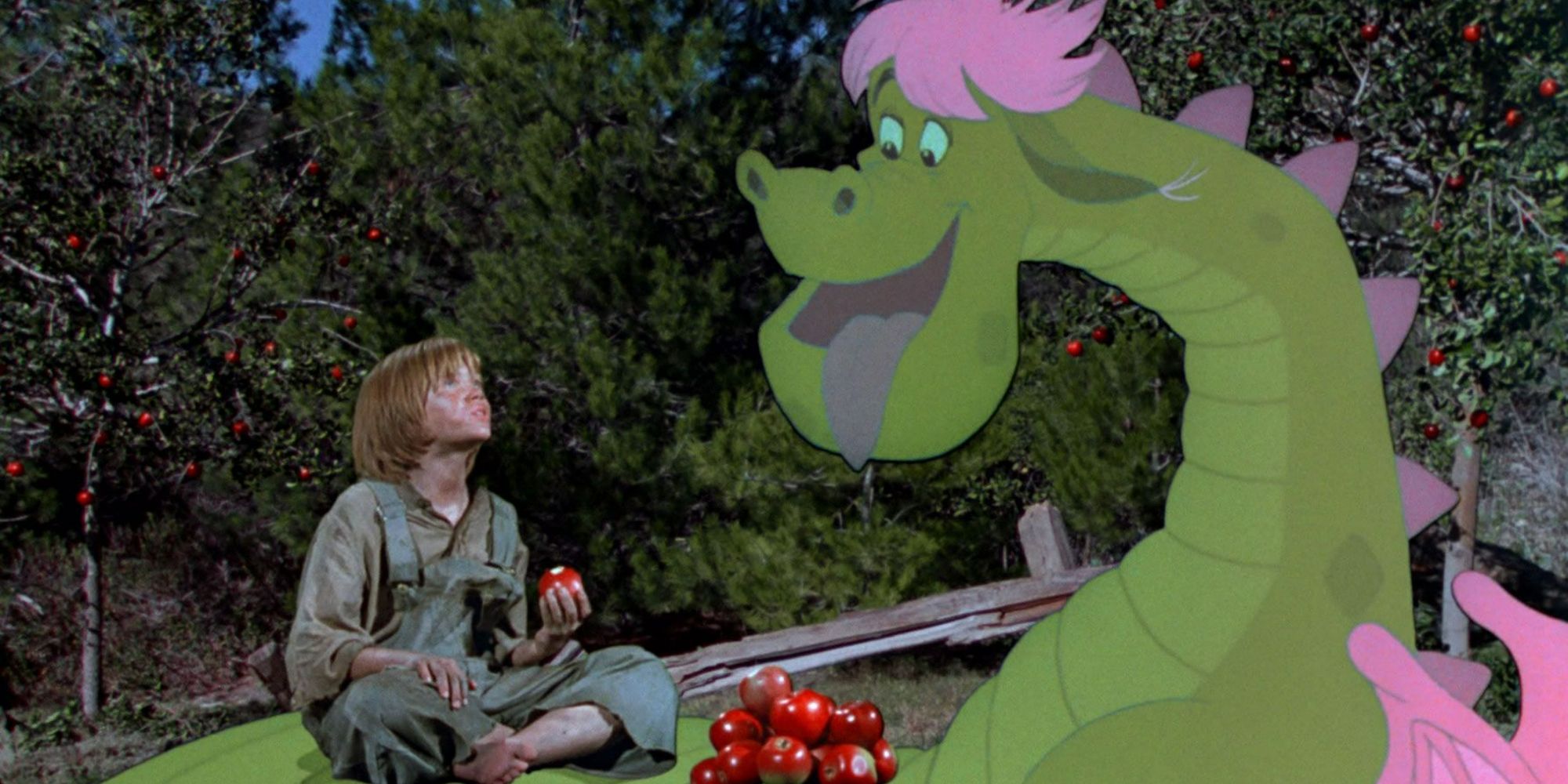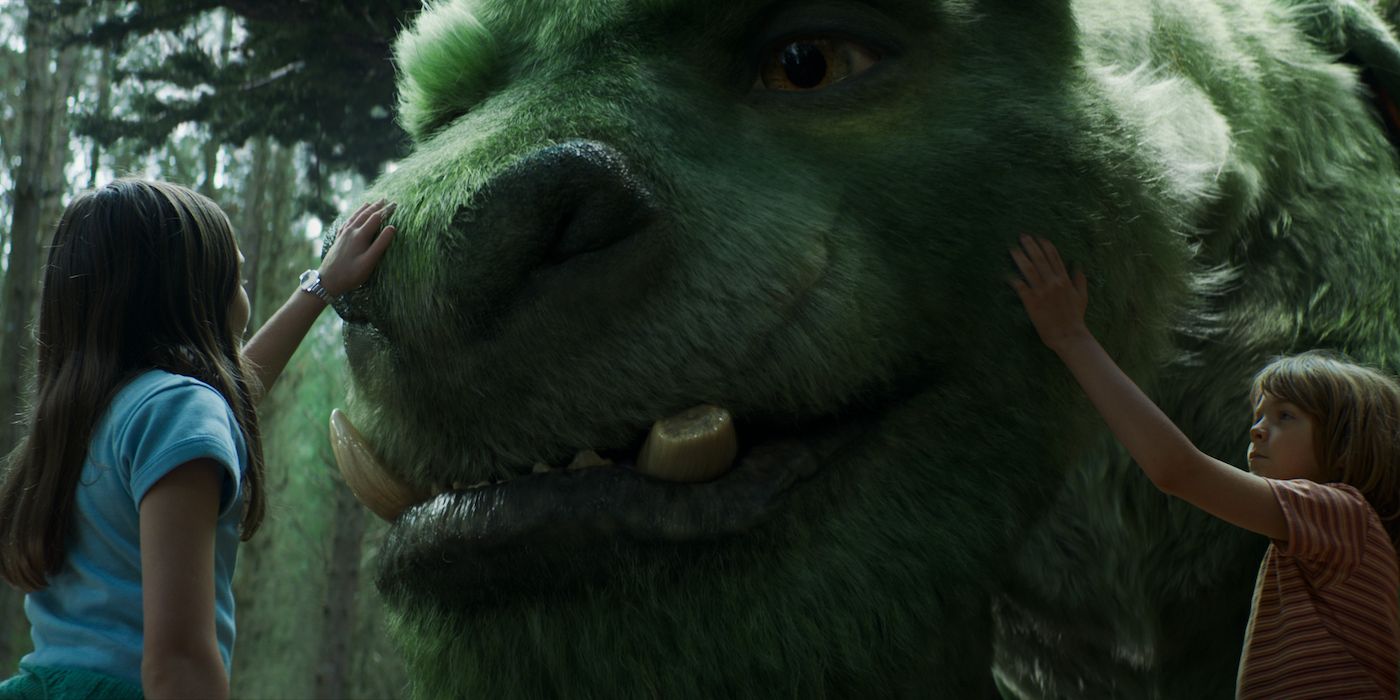As Disney continues to delve into its library titles as material for live-action remakes, it's become increasingly unclear who the intended audience is supposed to be. It’s hard to see the value in recreating Beauty and the Beast, The Lion King, or Aladdin shot-for-shot when the original films are all on Disney+, but apparently, audiences really want to see their childhood favorites pasted into a medium they were never intended for. It feels as if Disney values letting adults recreate their childhoods more than creating projects that are actually for kids; films like Christopher Robin, Tim Burton’s Alice in Wonderland, and Cruella were even specifically marketed as subversive takes for more mature audiences.
Compared to Disney’s overall slate, 2016's Pete’s Dragon went largely unnoticed. While it earned strong reviews, its respectable box office performance of $143 million was far lower than the billion dollars brought in by the remakes of the iconic '90s films. Disney apparently learned their lesson; viewers weren’t as interested in older, lesser-known properties, and the original Pete’s Dragon isn’t a beloved favorite with instantly recognizable songs. It's troubling that this is the direction Disney’s live-action projects are headed, because Pete’s Dragon was the rare remake that provided an accessible story for children unshackled by their parents’ expectations. It’s a family film that treats its young viewers with respect, and the dramatic themes of finding a new family in the wake of tragedy make it accessible to older viewers as well.
2016's 'Pete's Dragon' Updates and Improves
The 1977 Pete’s Dragon is certainly not a classic on the level of The Lion King or Aladdin, and as a children’s film, it takes an unusual approach to introducing the mythology. The titular child Pete (Sean Marshall) is able to escape an abusive foster home thanks to his invisible dragon friend Elliot, but the story mostly centers on him trying to convince the lighthouse keeper Lampie (Mickey Rooney) and his daughter Nora (Helen Reddy) to believe in magic. Pete is already familiar with the existence of dragons by the time the story starts, and now he just has to explain it to cynical adults.
Director David Lowery takes the opposite approach. The tragic death of Pete’s (Oakes Fegley) parents opens the film, but it's not the image of their loss that’s etched in his mind. Rather, the isolated boy immediately discovers Elliot, who provides him with comfort. It’s made clear that the only dragon in the forest would be threatened if he revealed himself, so Pete and Elliot immediately have a connection as two loners without families. This is more effective than beginning with a previously established relationship because it shows the initial wonderment through a child’s eyes. Elliot is beautifully brought to life through jaw-dropping visuals, and his initial appearance is emotionally effective because he’s introduced to Pete following a traumatic moment.
Pete is inevitably met with skepticism when he’s discovered within the woods by forest ranger Grace (Bryce Dallas Howard) and her lumberjack husband Jack (Wes Bentley), and Lowery uses Pete’s awkwardness to explore the trouble children have communicating their feelings. It’s not that Pete is trying to convince two cynics to believe in magic, but to believe him. He’s suffered a tragic loss and has a mythical friend who helps him heal, and Grace and her family learn the importance of actually listening to the boy instead of dismissing his fantasies.
Lowery Grounds His Take on This Fantasy
Lowery finds the right mix between whimsical and realistic. The viewer learns more about Grace and Jack through their daughter Natalie (Oona Laurence), who is saved by Pete early on, thereby exposing him to the outside world. Pete and Natalie’s relationship balances the mythical and the actual; Pete is able to open the sheltered Natalie up to a world of imagination, and she’s able to show him the value of having a loving family. The two kids are the active characters, and their parents are only roped into the narrative at points that are necessary.
However, the adult characters aren’t caricatures. Part of the issue with the original film is that Mickey Rooney’s character is completely wacky, and Helen Reddy is unrealistically saccharine, and their portrayals shatter the stakes for young viewers if Pete is the only character with any depth. Grace is motivated to preserve the natural land and environment, and it's over the course of the story that she realizes Elliot is a neglected creature in need of her help. Jack isn’t characterized as her polar opposite, and it's noted that he’s trying to balance protecting the environment with the realities of his line of work.
While Grace’s father Meacham (Robert Redford) is more free-spirited, his steadfast belief in dragons’ existence is characterized as the thoughtful reflections, not the crazy ramblings, of an older man. Similarly, the antagonist Gavin (Karl Urban) is aggressive in his pursuit of Elliot, but he’s modernized as a small-town hunter looking to make a name for himself, and not a villain of unrealistic cruelty. The characters elevate the goofier elements of the original film and update them with more depth; to simply copy and paste a film intended for an animated medium wouldn’t allow for these modern insights.
'Pete's Dragon' Works Because It's Less Beloved Than Other Remakes
Best of all, Lowery’s Pete’s Dragon doesn’t come with the burden of expectations that the remakes of beloved films do. Even if a film like The Jungle Book expands on the story of the animated classic, there are still many elements being reinterpreted; you’re not listening to “I Want To Be Like You” for the first time, you’re judging Christopher Walken’s take on lyrics that are familiar. Pete’s Dragon is almost entirely independent of the original film’s influences, and thus has an identity of its own.
Giving an arthouse filmmaker like Lowery the reins to a lesser-known library property was a somewhat riskier prospect for Disney, and if the success of their cynical retreads indicates anything, it's an adverseness to taking risks. However, Pete’s Dragon has a novelty that something like Beauty and the Beast or Aladdin can never claim: It’s easily the definitive version of the story. By reimagining the narrative so that the child’s perspective is firmly at the center, Pete’s Dragon is the rare Disney live-action remake that justifies returning to the material.



